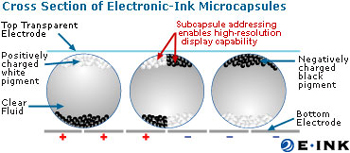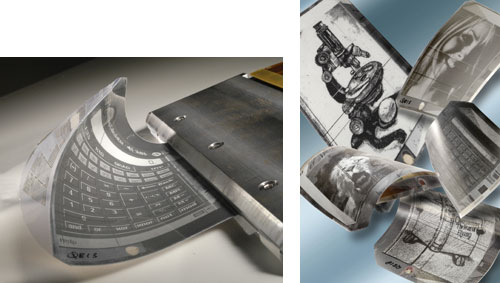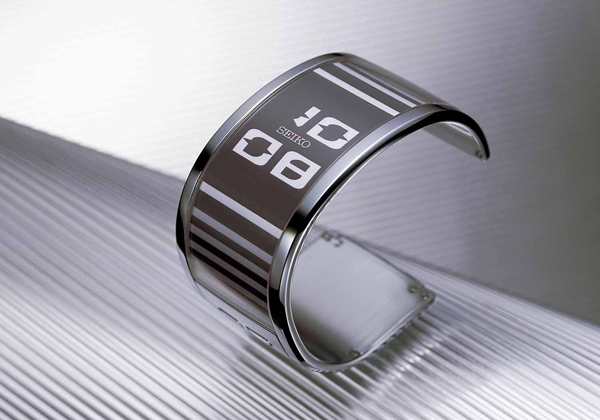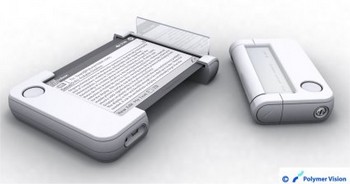Difference between revisions of "Fabian Ifland"
| Line 9: | Line 9: | ||
Philips, with the partner Polymer Vision, invented a rollable display with a bending radius of initial 2 cm, now even reduced to less than 1 cm. These displays are still black and white due to the complicated structure of the display. These extremly thin displays use active-matrix polymer pixel driving with a so-called reflective electronic ink. | Philips, with the partner Polymer Vision, invented a rollable display with a bending radius of initial 2 cm, now even reduced to less than 1 cm. These displays are still black and white due to the complicated structure of the display. These extremly thin displays use active-matrix polymer pixel driving with a so-called reflective electronic ink. | ||
[[Image:e-ink.jpg]] | |||
The initial size was 320x240 (85 dpi), today even larger prototypes can be produced. | The initial size was 320x240 (85 dpi), today even larger prototypes can be produced. | ||
Revision as of 21:41, 27 March 2006
Rollable Display
Overview
Mobile devices are constantly getting smaller and smaller while there is the demand of having a large display. These two contradictory demands need to be solved. One approach is using a flexible, rollable display then can be rolled into the device (PDA, smart phone) and if necessary rolled out to have a bigger screen to present complex information. These kind of displays do not break. They can be used for various applications like electronic books, newspapers, and magazines. Philips did quite successful research in polymer electronics. They(as of 2004) were able to produce 5,000 prototypes per year and is constantly seeking for volume production for a reasonable price.
Technology
Philips, with the partner Polymer Vision, invented a rollable display with a bending radius of initial 2 cm, now even reduced to less than 1 cm. These displays are still black and white due to the complicated structure of the display. These extremly thin displays use active-matrix polymer pixel driving with a so-called reflective electronic ink.
The initial size was 320x240 (85 dpi), today even larger prototypes can be produced.
Images
References
http://www.polymervision.nl
http://www.e-ink.com
http://www.philips.com.hk/about/news/press/article-2585.html





